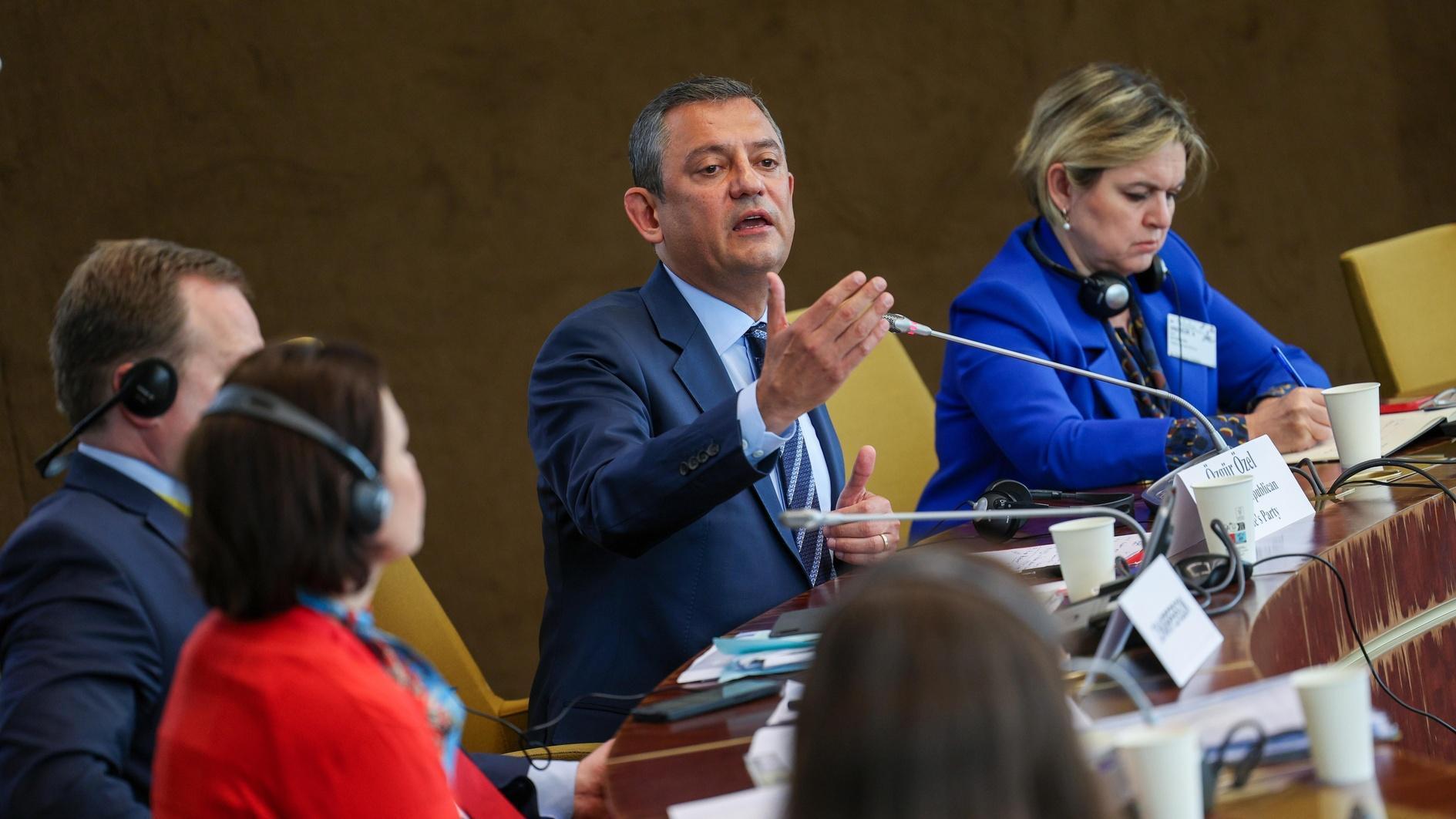A guide to Istanbul’s secrets in 48 hours
Saffet Emre Tonguç – ISTANBUL

Friday
6:00 p.m.
First and foremost, you have to walk on Istiklal Avenue to be able to say “I am in Istanbul.” The Street was once known as “Pera’s Big Avenue” or “Cadde-i Kebir.” If you haven’t smelt the air of this place or the large crowds that are coming towards you, it means you haven’t seen Istanbul... 7:00 p.m.
Watch the city from a restaurant or a roof of a cafe like the famous Turkish poet Yahya Kemal Beyatlı, who said “I looked at you from another hill, dear Istanbul.” Litera, Mikla, Konak, Lebiderya are the first names that spring to mind.
8:00 p.m.
The Galata Tower was built by the Genoese in 1349 AD and was named the “Tower of Christ.” In 1638 AD, Hezarfen Ahmed Çelebi put on wings that he made himself and successfully flew from the Galata Tower to Doğancılar Square in the Üsküdar neighborhood, which is located on the Asian side of the city.
9:00 p.m.
There are so many places where you can eat in the city: Güney, Kiva Han, Yeni Lokanta, Meze by Lemon Tree, Roka Pera, Yakup and Boncuk are just a few of the places you can visit to satisfy ones palate. Don’t forget to eat ice cream at Mua which opened recently.Saturday
9:00 a.m.
Start the day by solving the mystery in Dan Brown’s latest book “Inferno.” Hagia Sophia is a place where you will be amazed by its Byzantium era mosaics and enormous dome. The tomb stone that you will see at the gallery of Hagia Sophia belongs to the Duke of Venice, Enrico Dandolo, who was responsible for the horrific assaults during the Fourth Crusade. In the book, the protagonist first finds the tomb stone, and then discovers the virus in the Basilica Cistern.

10:00 a.m.
Trace Sean Connery’s footsteps and go to the Basilica Cistern, which was built in the sixth century. In the James Bond film, “From Russia With Love,” the Basilica Cistern was used as the stage for the passage under the Russian Consulate. The two Medusa statues at the end of this tremendous structure that consist of 336 columns are still a mystery.

10:45 a.m.
Trace the four horses from Venice’s San Marco Square to the Hippodrome. The open air stadium that belongs to the Byzatium Era is today right next to the Sultan Ahmed Mosque. During the Fourth Crusade in 1204 AD, the crusaders forgot about honesty and devoutness when they came to the most beautiful city in the world. Among the objects that were stolen and taken to Venice was the Quadriga (a chariot drawn by four horses), which stood at the main entrance of the Hippodrome.
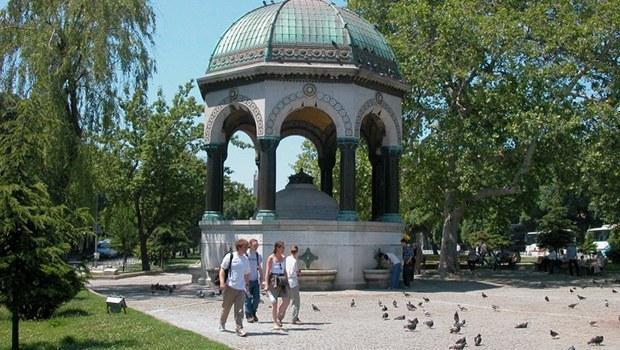
11:00 a.m.
In the hippodrome, there is a fountain right across from the Tomb of Sultan Ahmed l, which was built in 1898 AD as a sign of Ottoman-German friendship. The main reason why the Kaiser gifted the German Fountain to the Ottomans was because he wanted to take the Alexander Sarcophagus back to Germany. Osman Hamdi Bey, who brought the Sarcophagus to Turkey after excavations in what is today Lebanon, said to the sultan: “over my dead body.” So, instead of the Sarcophagus, the Ottomans gave the Kaiser a Hereke carpet. The famous German fountain was built on top of a Vakvak Tree, which was also the tree where the Janissaries were hanged from during the revolts of 1826 AD.
11:15 a.m.
Meet Istanbul’s oldest work of art: the Obelisk of Theodoius. The granite obelisk that stands in the middle of the Hippodrome was constructed in the ancient Egyptian city Thebes in memory of Pharaoh Thutmose III (1479–1425 BC). It was brought to the city by the order of the Roman emperor Theodosius I in the 4th century AD.
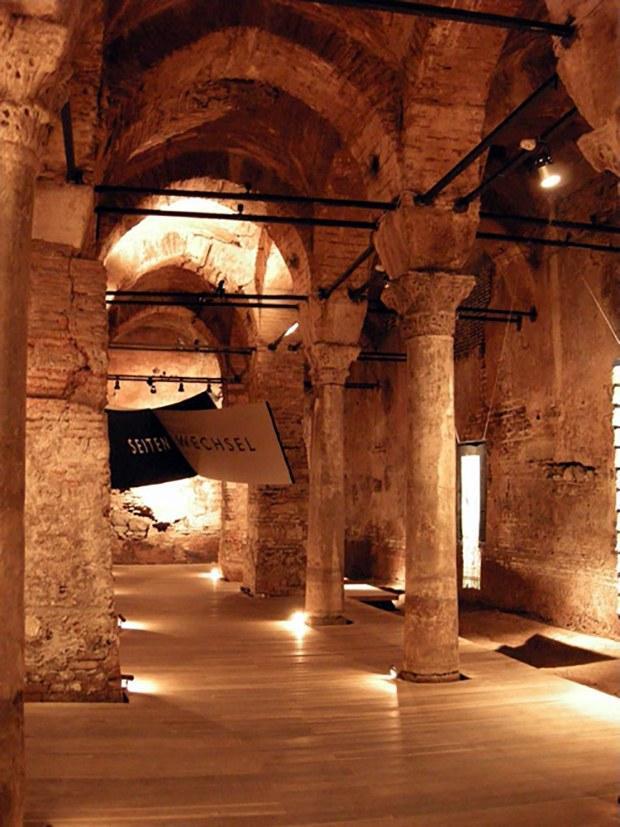
11:45 a.m.
Go downwards from the Hippodrome, through Nakilbent Street, and go to a rug store called Nakkaş located at number 33. Beneath the store there is a Byzantium cistern from the 6th century, which is used as an exhibition and concert hall. The cistern was also used in a History Channel documentary called “Underground Istanbul,” which highlighted the cities underground secrets.
12:00 p.m.
One of the secret treasures of Istanbul is the Little Hagia Sophia. In 1497 AD, the church was turned into a mosque by adding a minaret and a Muslim seminary. There are ancient Greek words written on the arches inside the mosque as well as also several verses from the Quran.
12:30 p.m.
Some of the alternatives for lunch are Tarihi Sultan Ahmet Köftecisi Selim Usta and Yeşil Ev located in the Four Season Hotel, which was once used as a prison. The cooks from the Seasons, Karakol, Medusa, Matbah and Kilari restaurants are all experts in Ottoman cuisine.
2:00 p.m.
The Fatih Mosque is the first monumental project in the Ottoman imperial architectural tradition. It watches the Bosphorus and the Golden Horn from the fourth hill of the seven hills of Istanbul. Napoleon’s wife Josephine’s cousin Aimee’s tomb is also located in the complex around the mosque. One of the most fantastic stories told about the Ottoman harem is about Nakşidil Sultan. By the end of the 18th century, 11-year-old Aimee du Buc de Rivery got lost while she was on her way from her school in France to the Caribbean. Some say she was kidnapped by pirates and was sold to the harem. There are at least 174 novels and films about her. It is said that Nakşidil Sultan, the consort of Ottoman Sultan Abdul Hamid I, is the same person with Aimee. Nakşidil Sultan is known for saving her son from Janissaries by hiding him in an oven.
3:30 p.m.
The only church that was not turned into a mosque after the fall of Constantinople and still belongs to the Greek community is Panayia Muhliotissa. Also known as the Church of St. Mary of the Mongols, it takes its name from a story about to the Byzantine Emperor Michael VIII Palaiologos’s illegitimate daughter Princess Maria Palaiologina. Maria was sent to Mongolia in 1265 to marry the great ruler of Mongols, Hülagü. However before she reached Mongolia, Hülagü died. Both countries decided to make Maria marry Hülagü’s son Abaqa. Mimar Atik Sinan who built Fatih Mosque was of Greek origin, he asked the sultan if the building could remain a church. Fatih issued an edict and ordered his people not to touch the church.
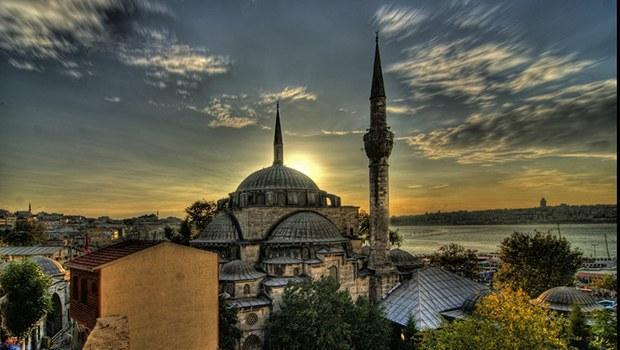
4:30 p.m.
Be the witness to a great love. Mihrimah Sultan Mosque in Edirnekapı was built by Sinan the Architect for Mihriman Sultan who was the daughter of Sultan Süleyman the Magnificent and his wife Hürrem Sultan. This masterpiece that leaves a mark on Istanbul’s silhouette stands at the sixth hill of the city. Another feature of its location is that it is right across another mosque in Üsküdar with the same name. Each year on the March 21 when daytime and night are of equal duration, the sun sets behind the only minaret of the mosque in Edirnekapı, as the moon rises between the two minarets of the mosque in Üsküdar. Some people claim that Mimar Sinan wanted to express his love this way to Mihrimah whose name means “the sun and the moon.”
5:30 p.m.
Kariye Museum was formerly called Chora Church. “Chora” means “countryside” in ancient Greek. Mosaics and frescoes that decorate the walls are more numerous and glorious than the ones in Hagia Sophia.
6:30 p.m.
Have you ever thought about what kinds of food was served at the circumcision feast of Sultan Süleyman the Magnificent’s son? Asitane Restaurant (009.0212.635 79 97) is the best Ottoman cuisine in the city. Its menu will give you an idea about the matter.
9:00 p.m.
While watching the legendary peninsula when it is enlightened at night, filled with amazing works of art, from the terrace of Zelda Zonk in Karaköy, take a sip of your drink and let the music in the background cheer you up.
11:00 p.m.
To end the night, you can choose Novo, Good Mood, Progapanda, Nu Teras or Gaspar.
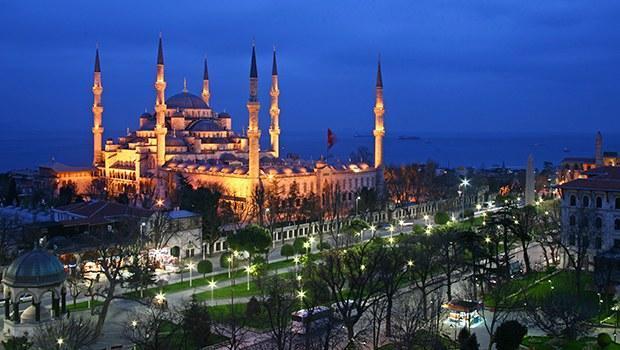
Sunday
9:00 a.m.
If you have cream, honey and menemen in your mind for the breakfast, visit Kaymakçı Pando (009.0212.258 26 16) which is located in Beşiktaş Çarşı. The decoration may be like a hovel, but the tastes of this authentic venue will blow your mind!
10:00 a.m.
Go to Istanbul’s most extraordinary tomb, Sheikh Zafir Tomb. The tomb is in front of Conrad Hotel and it is a part of the complex around the mosque. The buildings were restored lately. Sheikh Zafir was the spiritual consultant of Sultan Abdul Hamid II. The geometric patterns and the plant motifs blend so well that it’s impossible not to be amazed.
11:30 a.m.
Don Quixote’s famous writer Cervantes worked at the construction of Kılıç Ali Paşa Mosque in Tophane, according to Turkish researcher Rasih Nuri. Citing the complex’s foundation documents, Nuri claims Cervantes was injured during the Inebahtı War in 1571, was taken captive by the Ottomans and some of the hand carved work at the mosque belonged to him.
12:30 p.m.
Follow the traces of the White Russians that escaped to Istanbul after the Bolshevik Revolution at the Russian “roof churches.” Four churches that are located on the roofs of the buildings were made as chapels on top of Russian pilgrims’ houses that they used to rest while they were on the way to Jerusalem or Mount Athos in Greece. Aya Andrea was the first one, it was built in 1870. It is in Karaköy neighborhood.
1:00 p.m.
For lunch, the favorite places are Niaf, Colonie, İstikamet Karaköy, Ferahfeza, Gümrük and Karaköy Lokantası.
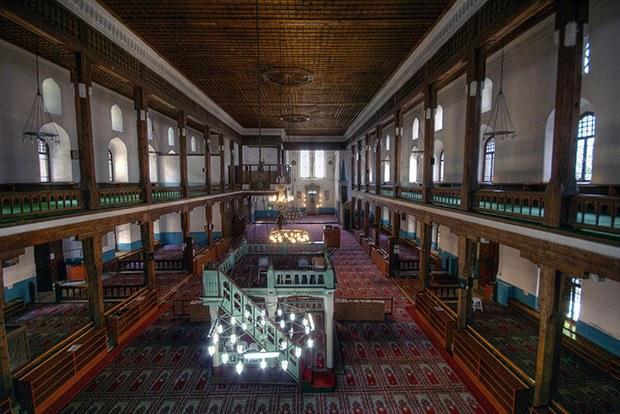
3:00 p.m.
When you move from the grey and ordinary buildings of Karaköy to the streets, you will come across the magnificent Arap Mosque. People who came to Istanbul during the fourth Crusade named the church they built over the ruins of a Byzantium church San Paolo. The church was converted to a mosque and the Christian tomb stones are at the Istanbul Archaeology Museum.
4:30 p.m.
Walk to Galata Tower which is one of the symbols of Istanbul. Either watch the fishermen or admire the Süleymaniye Mosque.

6:00 p.m.
Rüstem Paşa Mosque’s outer design is not the only thing that leaves a mark on the city. For many people, its İznik tiles are as significant as its architecture. There are examples of İznik tiles from the period when it was at its peak, all of them deserve to be studied one by one. After visiting this masterpiece by Sinan, you can shop in the Spice Bazaar and end the day.






